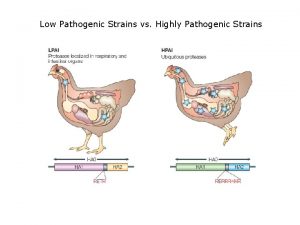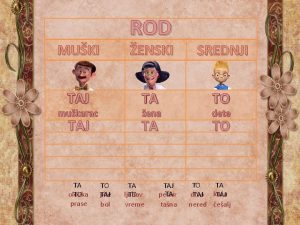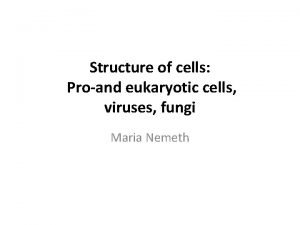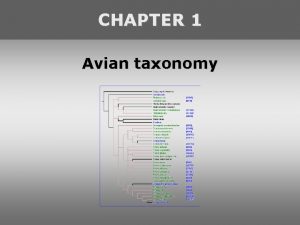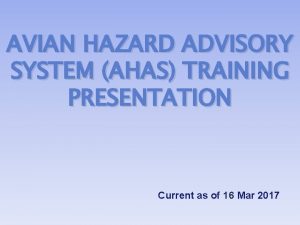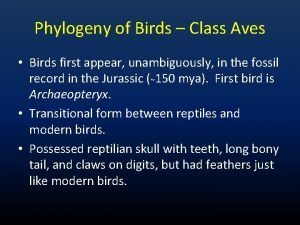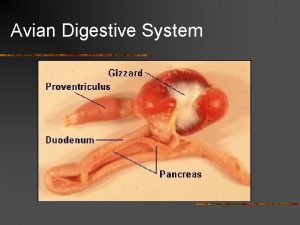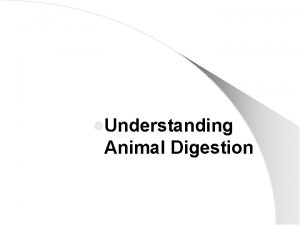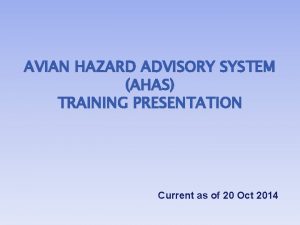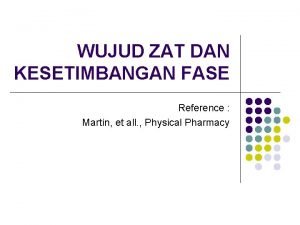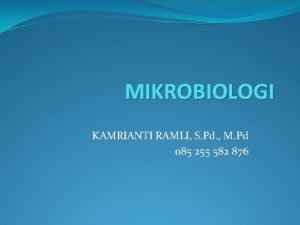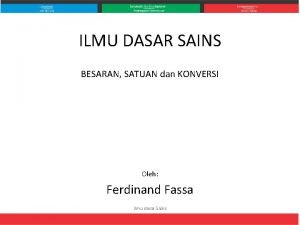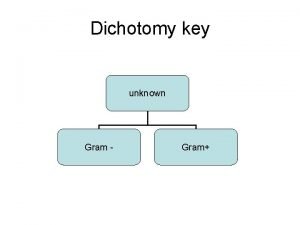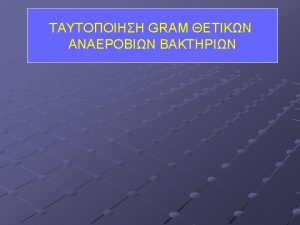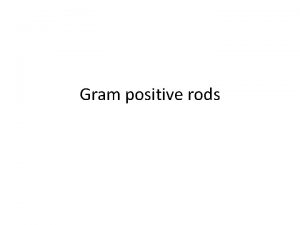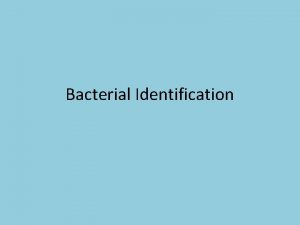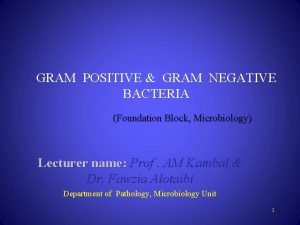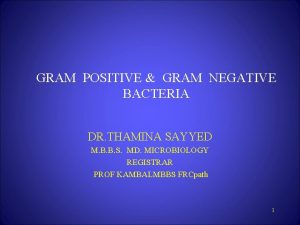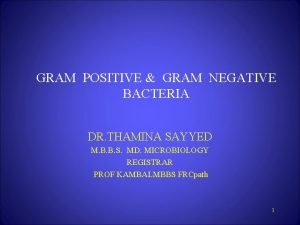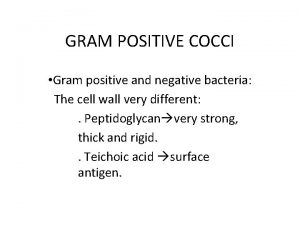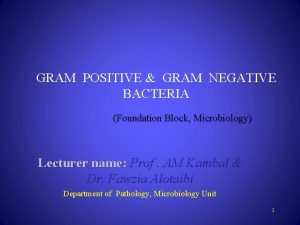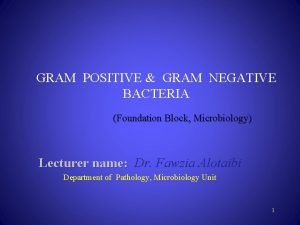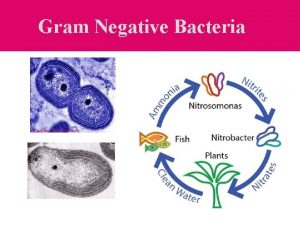Avian pathogenic E coli APEC Gram negative Rod
















- Slides: 16


§ Avian pathogenic E. coli (APEC) § Gram negative § Rod (bacillus) shape § Nonspore forming § Oxidase negative § Facultative anaerobe § Mac. Conkey agar pink colonies § Grow 18 -44ºC § Clonies are low, convex, smooth and colorless

§ Approximately 180 O, 60 H and 80 K antigens O (somatic) Antigen: Lipopolysaccharide in the cell Wall, is the antigenic portion of LPS, is resistant to boliling, H (flagellar) Antigen: Proteins found in the different types of flagellin is resistant till 100ºC K (Capsular) Antigen: Polymeric acids containing 2% reducing sugars, associated with virulence, on the surface of the cell, can be removed by heating for 1 hour 100ºC F (pilus) Antigen: involved in attachment to cells, variably expressed depending on the environment, classified as being mannose sensitive or mannose resistant

§ APEC are much less toxigenic than pathogenic E. coli in mammals and humans § APEC don’t produce enterotoxins, other toxins are elaborated

§ E. coli serotypes colonize cecal mucosa § Egg transmission of pathogenic E. coli is common and can be responsible for high chick mortality § The most important sourca of egg infection is fecal contamination of the egg surface with subsequent penetration of the Shell and membranes § Coliform bacteria can be found in litter and fecal matter

§ E. coli are present in the intestinal tracts of most animals and shed in the feces often high numbers. Direct or indirect contact with other animals or feces can introduce new strains into the poultry flock § Trachea, ceca, oviduct of laying hens remainded persistently colonized for at least 21 weeks after oral or intra-air sac inoculation with pathogenic E. coli § Mechanical vectors of E. coli and fly larvae develop digestive tract infections with E. coli

§ Localized infections generally result in fewer and milder clinal signs than systemic diseases § Lameness and retarded growth are seen § Affected birds are typically undersized for the flock and found at the end of the house, along the side walls or under feeders or waterers § Birds walk with characteristic hopping motion if the 1 leg is affected § When the thoracolumbar spine is affected, the birds have an arched back, sit on their hocks, and bear little or no weight on their feet § Feces are green with white to yellow urates § Omphalitis, yolk sacs may have seen

§ Decreased water consumption § They sit with their eyes closed in a hunched position with drooping of the head, neck, and wings § Morbidity and mortality are highly variable

§ Omphalitis is an inflammation of the navel (umbilicus) § The yolk sac is also usually involved (yolksacculitis) § Fecal contamination of the egg shell and unsanitary conditions in the hatchery are considered the most important sources of infection § Yolksacculitis also can result from translocation of bacteria from the chick’s intestine or from the bloodstream

§ Accumulations of caseating exudate in the body cavity resemble coagulated yolk, which is the reason for the common name egg peritonitis

§ Presence of virulent E. coli in the bloodstream defines colisepticemia § Colisepticemia progresses: acute septicemia, subacute polyserositis, and chronic granulomatous inflammation § Tissues that develop a green discoloration following exposure to air and a characteristic odor § The bursa Fabricius is often atrophic or inflamed § Pericarditis § Initially fluid and soft masses of pale exudate accumulate within the pericardial sac § Exudate increases, becomes more cellular (fibrinoheterophilic), and undergoes caseation

§ Affects both chickens and turkeys § E. coli damage to the respiratory mucosa § Lesions are in trachea, lungs, air sacs, pericardial sac and peritonal cavities § Infected air sacs are thickened and have caseous exudate on the respiratory surface

1. Coligranuloma (Hjarre’s disease) 2. Air sac disease 3. Arthritis 4. Plantar abscesses 5. Omphalitis 6. Panophthalmitis 7. Peritonitis 8. Salpingitis were identified and described as the role of E. coli lesions.

§ is characterized by multiple granulomas in liver, ceca, duodenum, and mesentery, but not spleen § an uncommon form of systemic colibacillosis that usually occurs sporadically in individual birds, but can cause mortality as high as 75% when a flock is affected § typical heterophilic granulomas are present in the affected tissues

§ Biosecurity is essential to the control of colibacillosis § Keeping E. coli out of the flock is not the goal because intestinal colonization is universal § Fecal contamination of hatching eggs is the most important way that E. coli are transmitted between flocks. Collecting eggs frequently, keeping nest material clean, not using floor eggs, discarding cracked eggs or those with obvious fecal contamination, and fumigating or disinfecting eggs within 2 hours after they are laid can reduce transmission. E. coli on the shell surface can be reduced or eliminated with sanitizers § Ultraviolet irradiation can reduce or eliminate E. coli

§ Antimicrobial drugs have been used extensively for reducing losses from colibacillosis since their first introduction for treatment of poultry in the mid 1950 s § Adding tetracycline to the chick’s drinking water accelerates the process § Water administration of apramycin proved effective in reducing the numbers of organisms in the digestive tract and preventing bacteremia in chickens § Neomycin reduced mortality in turkey § Anticoccidials also have antimicrobial activity that may be beneficial in the prevention and treatment of coliforms
 Low pathogenic avian influenza
Low pathogenic avian influenza Taj ta
Taj ta Non pathogenic definition
Non pathogenic definition Avian taxonomy
Avian taxonomy Avian taxonomy
Avian taxonomy Ahas bam
Ahas bam Enantiornithes
Enantiornithes Avian ku ethnicity
Avian ku ethnicity Bird digestive system functions
Bird digestive system functions Similar sire similar scion
Similar sire similar scion Dispersal definition
Dispersal definition Swine digestive system
Swine digestive system Ahas bam
Ahas bam Fase formula
Fase formula Bakteri gram positif dan negatif
Bakteri gram positif dan negatif Grams to gram
Grams to gram Satuan berat ton
Satuan berat ton
